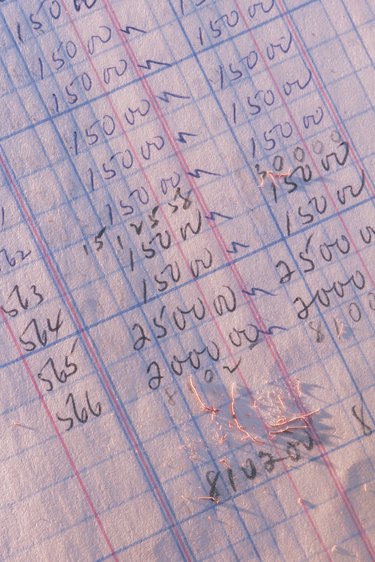
Spreadsheet programs such as Microsoft Excel enable you to set up text and numbers in a row and column-based interface that provides built-in resources for calculating and evaluating business data. The look and function of a spreadsheet mimics the ledger books that accountants use to track costs and profits, minus the need for manual calculations. Each part of a spreadsheet either contains, calculates or displays information, making it easy to leverage company data to answer what-if questions, find high- and low-performing assets, track employees and evaluate profits and losses.
Workbooks and Worksheets
Video of the Day
Excel refers to its documents as workbooks. Within each file, individual worksheets function like the pages in a ledger. Although you'll hear the word "spreadsheet" used to refer to Excel documents as well as their pages, the term also applies to the type of software itself. By default, an Excel workbook contains three worksheets, but the file format accommodates as many pages as your computer's available memory allows. The workbook interface identifies each worksheet with a named tab that you can customize to reflect its contents.
Video of the Day
Cells
A worksheet cell exists at the intersection of a row and column, and can contain up to 32,767 characters. How you set up your data determines whether a row or a column represents the equivalent of a full record of information. For example, each row can represent contact information for an individual member of your staff or production information for a single item in your company's lineup. To identify and reference your data, each cell carries an address that reflects the combination of its column and row location. In Excel's default A1 reference style, columns use letters and rows use numbers as identifiers, making the first cell in a workbook "A1." Excel also includes an alternate reference style, R1C1, in which rows and columns both use numeric identifiers, turning cell A1 into cell R1C1.
Headings
Within an individual Excel file, you can access up to 1,048,576 rows by 16,384 columns. To identify row and column locations, Excel displays headings, prefabricated labels that appear to the left and above the main data area of each worksheet. Clicking on an individual heading selects its corresponding row or column of data. By default, Excel displays but does not print these headings, but you can alter either or both of these settings in the program's preferences.
Formula Bar
Although you can use a spreadsheet to collect and display information without performing any data manipulation on your aggregated text and numbers, spreadsheet software really shines when you use its built-in functions and formulas to calculate and combine information. The formula bar provides Excel's interface element through which to create formulas that find the highest or lowest number in a series, display a result in another cell when parts of your data meet specific tests, change the color of a cell's contents or background depending on the information it contains, or combine text elements from multiple columns to turn an employee directory entry into the text for an address. Each formula combines information from and about your data with functions that provide prefabricated access to specific types of data inquiries and calculations.